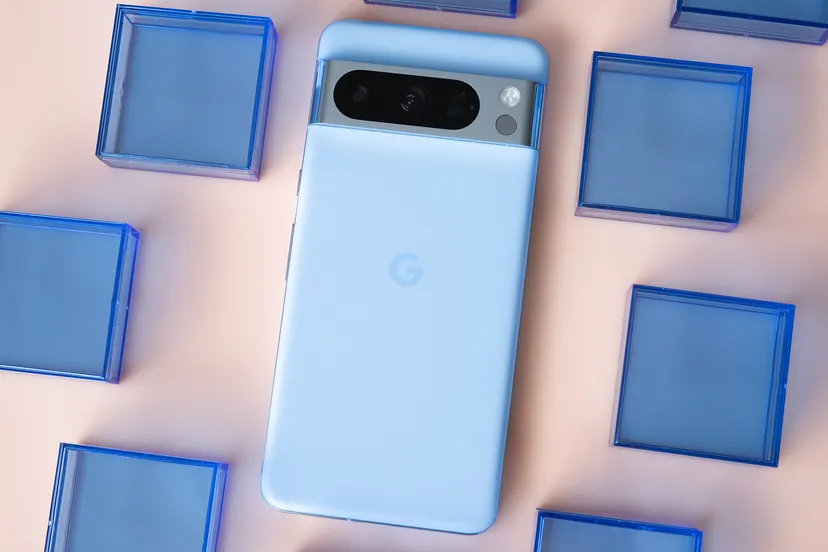
Taking your temperature should be easy-peasy and reliable. This is fiddly at best.
Earlier this week, Google updated the Pixel 8 Pro to let its strange new temperature sensor finally take readings of human bodies. I regret to inform you that, having used it, it doesn’t make this feature any less baffling.
To measure body temperature, you have to sweep the phone’s infrared temperature sensor over the side of your forehead, right above the temporal artery. So far, nothing super odd here. Just this month, I got to check out the Withings BeamO, a 4-in-1 multiscope that also has you scan the same kind of sensor over the same artery to measure your temperature. The difference is the BeamO was quite easy to use, while the Pixel 8 Pro was incredibly finicky.
This is because the phone’s temperature sensor is located in the rear camera array. That makes total sense if you’re using it to scan objects (though again, why?). But if you’re trying to take your own temperature, it’s difficult to gauge if you’re doing anything correctly because you can’t actually see the screen. Google includes an instructional video, which shows you just how close you’re supposed to hold it to your forehead (very close) and how it needs to be tilted at a slight angle. The phone will try to walk you through all of this. Once you’re close enough, the phone will vibrate when it’s time to swipe the phone over your forehead (without touching) toward your temple. You can enable voice cues, but you still have to know where to tap and how fast to move. It’s not what I’d call intuitive, and you’ll likely need to try it a few times to get the hang of it.
There’s a reason people use the front-facing camera to take selfies, even if the rear camera takes higher-quality photos. Just from a user experience, this is best suited for taking someone else’s temperature or, rather, taking someone else’s temperature while using their phone because it’s weird to keep other people’s health data on your phone. You have the option of syncing your data with the Fitbit app, and it saves any readings from the past week by default in the native app.
Outside of the fiddly user experience, accuracy is another question mark. In this screenshot, my colleague Parker Ortolani’s Pixel 8 Pro told him his body temperature was 95 degrees Fahrenheit. Granted, Parker said he’d just been outside for this particular reading, but that’s bordering on hypothermia. It’s also highly unlikely. I also watched Parker take readings from his forearm and palm. Neither of those areas should have worked, but the phone didn’t stop him. (The feature is only calibrated for the forehead, so you shouldn’t trust results from other body parts.)
To be fair, this is one of the issues with temporal artery temperature readings in general. While they’re quick and generally accurate, they can easily be thrown off by things like direct sunlight, cold environments, or even sweaty foreheads. User error can also impact readings, and as I mentioned, this is one finicky way to measure your body temperature.
For this feature to make it to the public, Google says it got De Novo FDA clearance. That’s the same kind Apple got for the Apple Watch Series 4’s EKG feature, but it mostly means that it’s a low to moderate risk device (aka generally safe) that doesn’t have a similar equivalent yet. That said, the phone includes several disclaimers within the temperature app. You can see from these screenshots that Google notes that “temperature readings may vary and are most accurate when done properly.” There are also disclaimers that readings are “general guides only,” and on other screens, the app notes it can’t detect any illness or replace advice from a healthcare provider.
All of this is to say, I can’t imagine the average person using this feature. Ostensibly, this is something that Google started building in 2020 and 2021 — a time when restaurants and other public spaces were scanning people’s temperatures to screen for covid-19. And if it’d been around then, perhaps we’d be thinking of this feature in a different way. For better or worse, I can’t remember the last time a restaurant or event space took my temperature.
You could argue that having this on your phone is a matter of convenience. If I’m on a plane and feeling a bit feverish, I probably wouldn’t have a thermometer on hand. Theoretically, I could then whip out a Pixel 8 Pro and proceed to have an awkward time using the rear camera and sensor to measure my temperature. That’s perhaps the one instance where this would make sense — and even then, a precautionary Advil and the good ol’ back of the hand to the forehead would probably suffice.





























